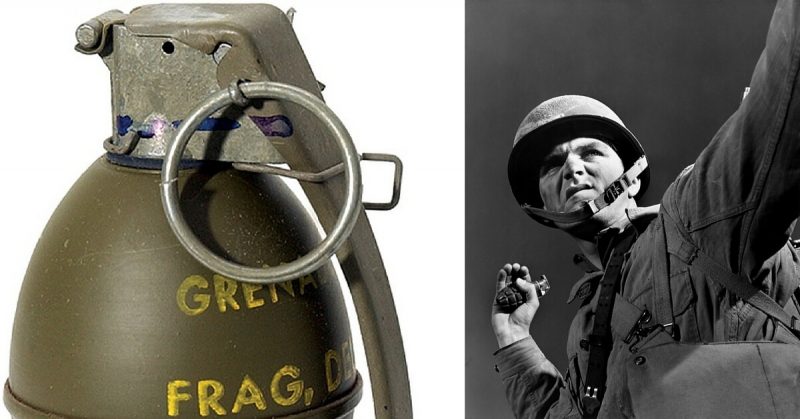Grenades are, it goes without saying, lethal weapons so if you are ever in a position of using one then be sure you know what you are doing!
How Do You Use a Grenade?
The standard design of a hand grenade includes a safety lever or handle as well as a safety pin that stops the lever from being accidentally released. The handle is spring-loaded, so the pin prevents this from automatically springing open. Once the pin is removed, however, then the handle releases, this ignites the detonator, at which point the safety handle detaches and falls from the grenade.
So when using a grenade you hold the handle tightly, remove the pin while you’re still holding the handle and then throw the grenade. Once you let go of the grenade whilst throwing, this releases the handle, ignites the detonator and causes the explosion.
Soldiers who use grenades have a certain technique when doing so, and it is as follows: grip it with your throwing hand, using the thumb to hold the safety handle, use the other hand to pull the safety pin and then throw the grenade towards your target.
Soldiers, when trained in weapons, are taught to only throw whilst standing, kneeling or prone positions and to only use underarm or sidearm throws. Once the grenade is released the soldier must seek cover or if none is found lie in a prone position.
When the grenade is released this releases the safety handle, a striker throws the handle from the grenade, and the primer blows up which ignites the fuse. Once the fuse burns all the way down to the detonator, the main charge explodes.
Grenades are used to cause damage to targets within a set radius, for example, the M67 grenade claims to kill all within 5 meters and can induce casualties within 15 meters. Fragments can be thrown as far as 230 meters, however.
Alternatively, some people release the safety handle before they throw the grenade – this allows the fuse to burn down so the grenade will detonate quicker once thrown at the target (a technique known as cooking).
The benefits of this are less time for targets to react or flee from the grenade, however, the downside is you may mistime the fuse and end up seriously harming yourself. This technique is banned in the United States Marine Corps training and discouraged once in the field.
This video is called 10 Grenade fails, but we only see the first five here – viewers can go to the website for more.
https://www.youtube.com/watch?v=_twdecTuz7I
